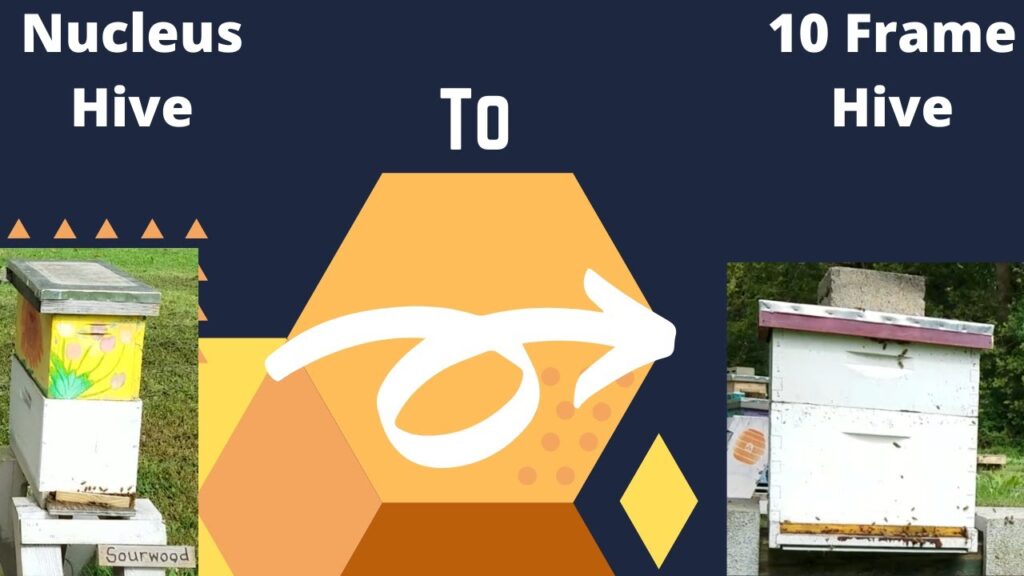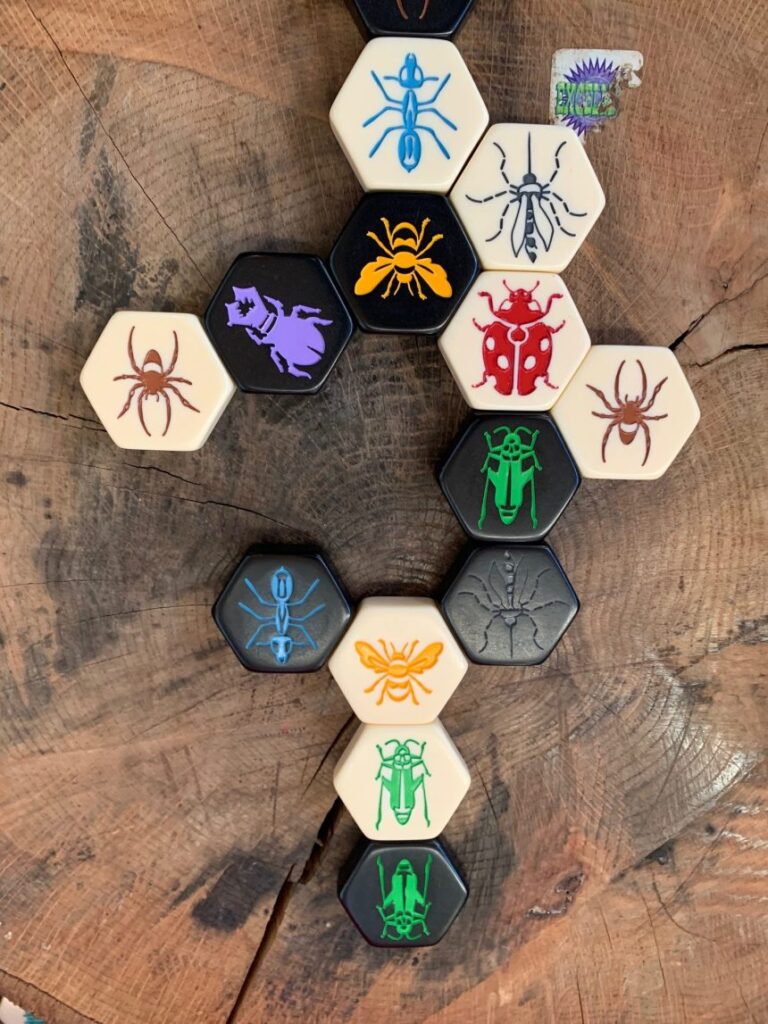
Are you an aspiring beekeeper looking to expand your hive? Look no further! In this article, we will explore the fascinating world of hive expansion techniques. From splitting colonies to adding supers, discover the secrets to growing a thriving bee community. Whether you’re a beginner or have some experience under your belt, this guide will provide you with valuable insights and practical tips to master the art of hive expansion. Get ready to cultivate a buzzing empire!

Choosing the Right Hive
Hive Types and Considerations
When it comes to choosing the right hive for your beekeeping operation, there are several factors you need to consider. The most common types of hives include Langstroth, top bar, and Warre hives. Langstroth hives are the most commonly used due to their versatility and ease of management. Top bar hives are a more natural alternative, allowing the bees to create their own comb without the use of frames. Warre hives are ideal for those who prefer a more hands-off approach.
You should also take into account your climate and local conditions. For example, if you live in an area with harsh winters, you may want to consider using insulated hives to protect your bees from the cold. Additionally, if you plan on moving your bees frequently, you might want to opt for lightweight hives.
Determining Hive Size
The size of your hive will depend on the number of bees you plan to have and your goals as a beekeeper. A standard Langstroth hive consists of deep boxes, medium boxes, and shallow supers. Deep boxes are ideal for brood rearing, while medium and shallow boxes are used for honey storage. The size of the boxes can vary depending on your needs and preferences.
To determine the appropriate hive size, you need to assess the strength and population of your hive. A strong hive with a rapidly growing population will require more space for expansion, while a smaller, weaker hive can thrive in a smaller setup. Regularly monitoring the growth and strength of your hive will help you make the right decision when it comes to hive size.
Choosing Hive Materials
When it comes to hive materials, there are a few options to choose from. Traditional hives are typically made from wood, which provides insulation and is easy to work with. However, there are also alternative options available, such as polystyrene hives which offer better insulation and durability.
When selecting hive materials, consider factors such as durability, cost, and maintenance. Wooden hives require regular painting and maintenance to prevent rotting, while polystyrene hives are low-maintenance and long-lasting. Ultimately, the choice of hive material will depend on your personal preferences and the specific needs of your bees.
Preparing for Expansion
Assessing Hive Strength
Before you can start expanding your hive, it’s essential to assess the strength and health of your colony. Inspect the brood pattern, check for any signs of disease or pests, and ensure that the bees have enough resources such as pollen and nectar. A strong and healthy hive is more likely to thrive during expansion.
Monitoring Population Growth
As a responsible beekeeper, it’s crucial to monitor the population growth of your hive. Regularly inspect the brood frames and look for signs of overcrowding. If the hive becomes too crowded, it can lead to swarming or other issues. By closely monitoring the population growth, you can anticipate when your hive will require expansion.
Providing Adequate Resources
During the expansion phase, it’s essential to provide your bees with adequate resources. This includes ensuring they have enough space, frames, and food sources. If your hive is running low on resources, consider adding additional supers or frames to accommodate the growing colony. Pay attention to the availability of nectar and pollen in the surrounding area and provide supplementary feeding if necessary.
Splitting Hives
Reasons for Splitting
Splitting a hive can be a beneficial technique for beekeepers. There are several reasons why you might consider splitting a hive. Firstly, splitting helps prevent overcrowding and reduces the risk of swarming. It also allows you to create new colonies, expand your apiary, or provide a new queen for a weaker hive. Additionally, splitting hives can help control diseases and pests, as it allows you to separate infected hives from healthy ones.
Identifying Splitting Opportunities
To identify the right time to split a hive, you need to assess the strength and population of your colony. A hive with a large population and an abundance of resources is a good candidate for splitting. Look for signs of overcrowding, queen cells, or swarm preparations. These are all indicators that the hive is ready for splitting.
Steps to Splitting a Hive
Splitting a hive involves several steps to ensure a successful outcome. Firstly, choose a suitable location for the new hive, making sure it meets the requirements for hive placement. Secondly, prepare the new hive with frames, foundation, and any other necessary equipment. Thirdly, select a queen or queen cells to introduce to the new hive. Finally, carefully divide the bees, brood, and resources between the two hives, ensuring a fair distribution. Monitoring the progress of both hives after the split is vital to ensure a smooth transition.
Swarm Capturing
Understanding Swarming
Swarming is a natural behavior of honey bee colonies. When a hive becomes overcrowded, the bees decide to split into two or more colonies. The old queen leaves the hive with a swarm of worker bees, while a new queen takes over in the original hive. Swarming is an instinctive way for bees to reproduce and expand their population.
Preparing Swarm Traps
To capture swarms, you can set up swarm traps in strategic locations. These traps should mimic the desired living conditions for the swarming bees, such as a dark and secure cavity. Place the traps in high-risk areas, such as near your hives or areas where swarms have been sighted in the past. Utilize pheromone lures or essential oils to attract the swarming bees to the traps.
Capturing and Relocating Swarms
Capturing a swarm can be an exciting experience for a beekeeper. Once the swarm has settled in the trap, carefully collect them and relocate them to their new hive. Wear protective clothing and use a bee brush or gentle techniques to guide the bees into a transport container. Make sure to handle swarms gently and avoid causing any harm to the bees. Once relocated, provide the captured swarm with adequate resources and monitor their progress closely.

Nucleus Hives
Introduction to Nucleus Hives
Nucleus hives, commonly referred to as nucs, are small colonies consisting of a queen, a few frames of brood, and bees. These hives are an excellent way to establish new colonies, create queen breeding stocks, and maintain genetic diversity. Nucleus hives offer a more convenient and cost-effective method of expansion, compared to splitting full-sized hives.
Creating Nucleus Hives
To create a nucleus hive, you need to carefully select a healthy and productive queen. Transfer a few frames of brood, along with bees, into a smaller hive box. Ensure that there is enough food, pollen, and nectar in the nucleus hive to sustain the colony. Regular monitoring and management of Nucleus hives are essential to ensure their successful development.
Managing Nucleus Hives
Managing nucleus hives involves providing them with adequate resources and performing regular inspections. Monitor the progress of the queen, check for signs of disease or pests, and ensure the bees have enough space to expand. Depending on your goals, you can either merge the nucleus hive with a full-sized colony or use it as a standalone hive for queen rearing or other purposes.
Queen Rearing
Importance of Queen Rearing
Rearing your own queens is an essential skill for beekeepers. It allows you to ensure the quality and genetics of your colony, as well as have replacement queens readily available. By selectively breeding queens, you can create stronger and more resilient colonies that are better suited to your local conditions.
Identifying Potential Queen Candidates
When selecting potential queen candidates, look for traits such as productivity, disease resistance, and gentleness. Choose colonies that demonstrate strong population growth and overall health. It’s also crucial to consider the genetic diversity within your apiary and avoid breeding from closely related colonies.
Queen Rearing Techniques
There are various techniques for queen rearing, including grafting, queen cups, and the use of queenless colonies. Grafting involves transferring young larvae into queen cups, which are then placed in a queenless hive for further development. Queen cups can also be used in queenless colonies to enable the bees to rear their own queen. Each technique has its own advantages and challenges, so it’s essential to find the method that works best for you and your bees.

Requeening
Knowing When to Requeen
Requeening is an important aspect of hive management to ensure the vitality and productivity of a colony. There are several signs that indicate it may be time to requeen. These include a declining population, aggression or excessive swarming behavior, poor brood pattern, or an aged queen. Regular inspections and monitoring of your hive will help you identify when requeening is necessary.
Removing Old Queens
To remove an old queen, you can introduce a new queen to the hive. There are various methods for introducing a new queen, such as using a queen cage or the newspaper method. Regardless of the method chosen, it’s important to monitor the acceptance of the new queen and ensure a smooth transition.
Introducing New Queens
When introducing a new queen, it’s crucial to take precautions to avoid rejection by the worker bees. To increase acceptance, quarantine the queen for a few days before introducing her to the hive. Additionally, use techniques such as using a queen introduction cage, slow-release cages, or the newspaper method to ease the acceptance process. Regularly monitor the behavior of the colony after introducing the new queen to ensure a successful transition.
Supering
Purpose of Supers
Supers are additional boxes placed on top of the hive to provide extra space for the bees to store honey. The purpose of supers is to allow beekeepers to harvest surplus honey without disturbing the brood nest. They prevent the bees from filling up the brood boxes with honey, ensuring enough space for the queen to lay eggs and the colony to thrive.
Determining Super Placement
Determining when and where to place supers on your hive depends on various factors. These include the strength and population of the colony, the availability of nectar sources, and local climatic conditions. It’s crucial to monitor the honey flow and assess the bees’ storage capacity to decide when to add or remove supers.
Harvesting Honey Supers
Harvesting honey supers can be a rewarding experience for beekeepers. Once the supers are filled with capped honey, they can be removed from the hive. Use appropriate tools, such as a bee escape or fume boards, to clear the supers of bees before extraction. Ensure proper hygiene and cleanliness when handling and extracting honey to maintain its quality.

Comb Management
Importance of Comb Health
Comb health is crucial for the overall well-being of the colony. Healthy combs provide a stable and hygienic environment for the bees. They serve as storage for honey, pollen, and brood, as well as foundation for the bees to build upon. Regular comb management is essential to prevent the buildup of pesticides, diseases, and chemical residues that can harm the bees.
Monitoring Comb Condition
Regularly inspecting the condition of your comb is a vital part of comb management. Look for signs of disease, pests, or mold, as well as any physical damage to the comb. Assess the cleanliness and quality of the cells and consider replacing old or damaged comb when necessary.
Replacing Old Comb
Over time, comb becomes darker and less effective at storing honey and brood. It can also accumulate chemical residues and pathogens that can harm the colony. To maintain optimal comb health, it’s important to periodically replace old comb. This can be done by slowly rotating frames out of the hive and replacing them with new foundation or drawn comb. Gradual replacement allows the bees to transition smoothly and ensures a healthy comb ecosystem within the hive.
Pest and Disease Control
Common Hive Pests
Hive pests can cause significant damage to your hive if left untreated. Some common hive pests include varroa mites, small hive beetles, wax moths, and ants. These pests can weaken the colony, damage comb, and spread diseases. Regular monitoring and proactive pest control measures are essential to prevent infestations and maintain hive health.
Identifying and Treating Diseases
Bee diseases can have a devastating impact on hive health and productivity. Some common bee diseases include American foulbrood, European foulbrood, chalkbrood, and Nosema. Regular inspections and monitoring are vital to identify symptoms and take appropriate measures for disease control. Consult with local beekeeping associations or experts to determine the most effective treatment methods for specific diseases.
Implementing Integrated Pest Management
Integrated Pest Management (IPM) is an approach that combines various techniques to control pests and diseases in a holistic manner. This includes practices such as monitoring, cultural controls, biological controls, and chemical controls. By implementing an IPM strategy, you can minimize the use of chemical treatments and promote a healthier and more sustainable hive environment.
In conclusion, mastering hive expansion techniques is essential for successful beekeeping. By choosing the right hive, preparing for expansion, splitting hives, capturing swarms, managing nucleus hives, rearing queens, requeening, supering, managing comb, and implementing effective pest and disease control measures, you can ensure the growth and productivity of your bee colonies. Regular monitoring, careful management, and a deep understanding of your bees’ needs will help you build a thriving and sustainable apiary.
